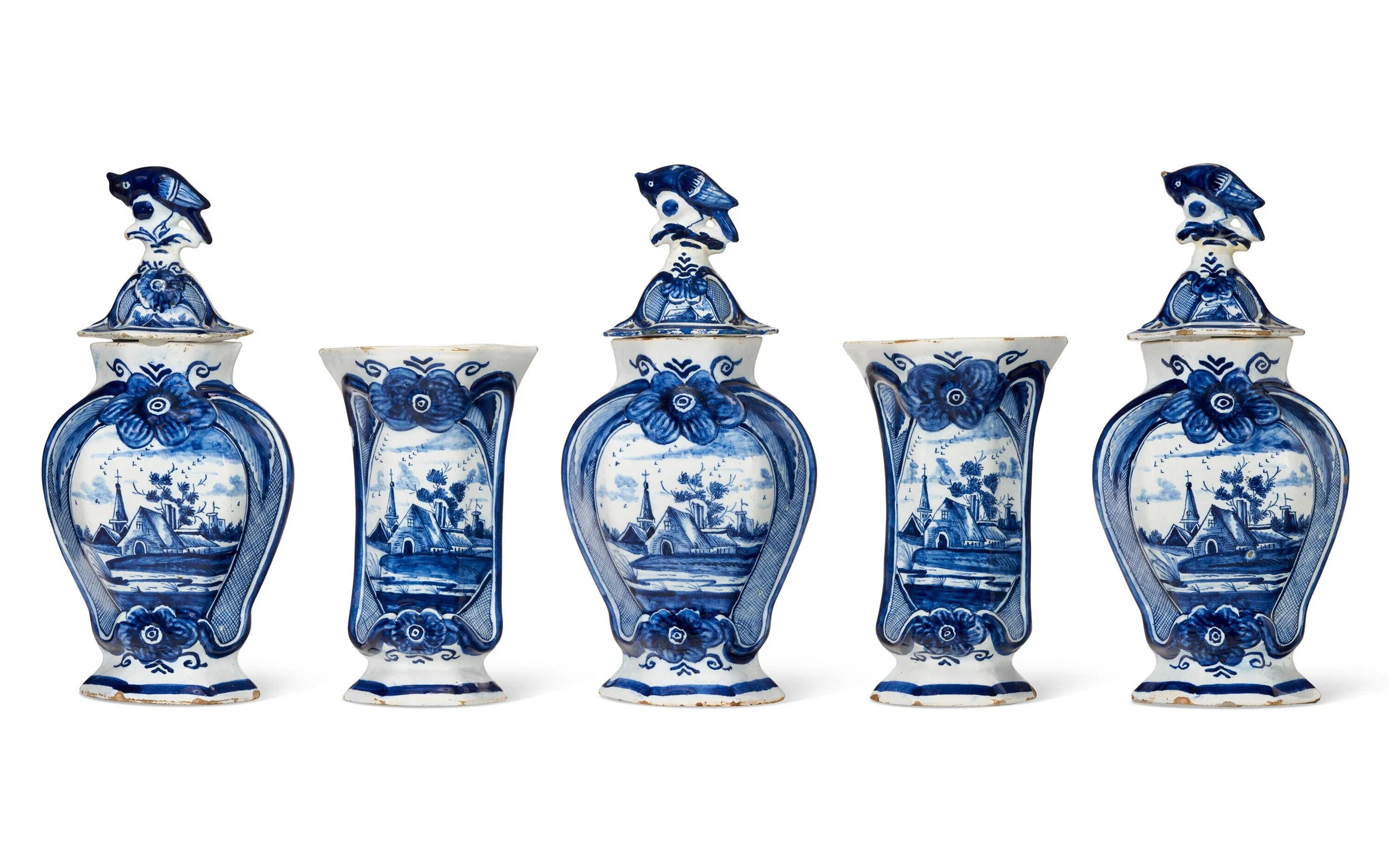The History of
Blue and White Porcelain
What is blue and white porcelain?
How is it made?
Here’s a brief summary of a long-standing craft of color and form.
Have you ever seen a blue and white vase - either in your family’s china cabinet or perhaps in a museum - and thought it was so beautiful and wondered where it came from and if it was valuable? First off, let me say that “value” is pretty subjective and often is up to personal taste; sure, there are standards to historic pieces, but it is still up to a person/institution to determine if it’s the right fit and if the price matches the desire to have it.
Blue and white porcelain, sometimes called ‘china’, is now made all over the world including Asia, Europe, and South America. There are two characteristics that have to be explained: blue and white separately.
What’s in the blue?
What material makes blue for ceramics? Usually it’s cobalt, a mineral found in the earth (sometimes synthetic materials are made to get different hues of blue - often called ‘stains’). For uses in clay, cobalt comes in two forms, oxide and carbonate, where oxide is ‘stronger’ of a pigment and carbonate is ‘weaker’ - both are used to make a variety of hues in blue. Cobalt can be used to paint, stencil, transfer, and use many other techniques to get the material onto ceramics. The raw material of cobalt ranges from a vibrant pink/purple to a dark purple-grey that almost looks black.
While blue and white porcelain is most popularly known to be developed in China, cobalt first arrived to Chinese artisans from Persia (Iran). Merchants travelled to China to create wares to bring back to the Middle East and Europe via the Silk Road. Along the way different cultures mimicked what they saw coming from Asia, notably Delftware in The Netherlands, French soft-paste porcelain, and tiles from Portugal.
What’s in the white?
There are many types of clays to use that produce a variety of colors from red (terracotta/earthenware) to white (porcelain) - the in-between colors could be something like a stoneware, etc. Iron is what makes the red color in earthenware and the absence of it is white clay - the less iron the whiter the clay. In order to get a cool, icy white color the clay needs to go through a process called “reduction” in a kiln where oxygen is taken out of the environment (through fire) - vast amounts of energy is needed to get to the right temperature for white clays and China invented the kiln technology to create very white porcelain - they kept this technique a secret as long as possible to be the only ones that could produce it.
Types of blue and white
There are many types of ceramics that use blue and white, including the ones mentioned in the ‘blue’ section. The first known pieces are a set of blue and white porcelain vases called The David Vases made in the Yuan Dynasty, though most blue and white porcelain from China comes from the Ming and Qing Dynasties.
FAQs
-
Generally called blue-and-white porcelain, Chinese wares can also be called by the name of the dynasty that they were made such as Qing dynasty porcelain, etc.
Other types of blue-and-white porcelain in other cultures, like in The Netherlands, is called Delftware and could go by other names like blue ware.
-
The first instance of blue-and-white porcelain was in the Yuan dynasty with a pair of vases called The David Vases, though the color blue was used prior to that. It was the inclusion of porcelain technology (firing at very high temperatures) that gave rise to the blue-and-white title.
-
Ceramics that are blue can be seen throughout the world in many different cultures, but generally speaking the first instances of blue-and-white (aka blue color on porcelain) was developed in China.
-
This is a hard question to answer as sometimes value is in the eye of the beholder. Historic ceramics have a market within museums and special collections. You would have to get a blue and white porcelain appraised and looked at by a specialist that knows the history of the culture it came from to know if it is valuable in a historic sense.




